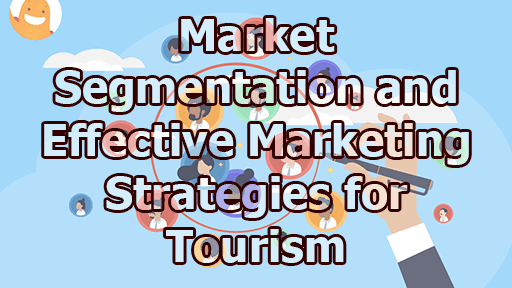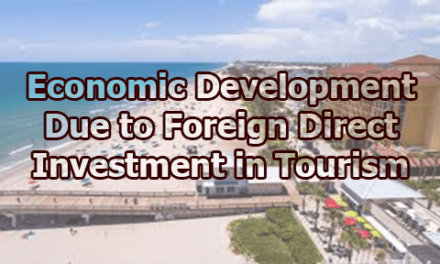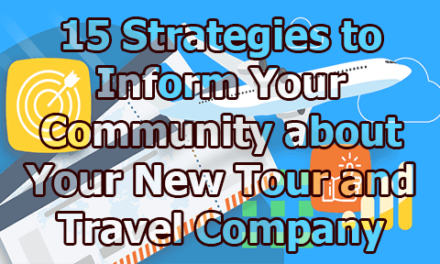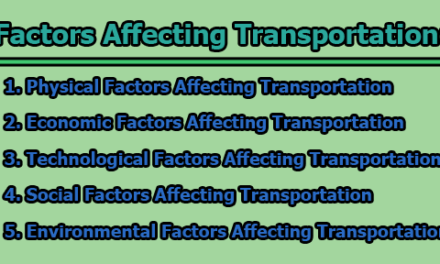Market Segmentation and Effective Marketing Strategies for Tourism:
The tourism industry is a dynamic and ever-evolving sector that continues to play a vital role in the global economy. With the world becoming more interconnected and accessible, the competition within the tourism industry has grown fiercer. To succeed in this competitive landscape, tourism businesses need to adopt effective marketing strategies that resonate with their target audience. Market segmentation is a fundamental concept in this regard. By identifying and understanding the diverse needs and preferences of different traveler segments, tourism businesses can tailor their marketing efforts to create memorable experiences and achieve sustained success. In this article, we will explore market segmentation and effective marketing strategies for tourism.
Section 1: Understanding Market Segmentation:
Market segmentation is the process of dividing a broader market into smaller, more manageable segments based on shared characteristics or needs. In the context of tourism, market segmentation helps businesses categorize travelers into distinct groups, making it easier to target their marketing efforts and provide tailored experiences. By understanding the motivations, preferences, and behaviors of these segments, tourism businesses can effectively create, promote, and deliver products and services that align with their customers’ expectations.
1.1 Demographic Segmentation:
- Age: Millennials, Generation X, and Baby Boomers have different travel preferences. Millennials often seek adventure and unique experiences, while Baby Boomers may prefer more comfort and relaxation.
- Gender: Men and women may have different interests when it comes to travel. Understanding these differences can help businesses design and market travel packages accordingly.
- Income: Income level influences the type of travel a person can afford, leading to varying expectations and preferences.
1.2 Psychographic Segmentation:
- Lifestyle and Interests: People with similar lifestyles and interests are likely to be interested in similar travel experiences. For example, adventure seekers, cultural enthusiasts, or wellness-focused travelers.
- Values and Beliefs: Identifying travelers with shared values and beliefs can help businesses create marketing campaigns that resonate with their target audience.
1.3 Geographic Segmentation:
- Location: Different regions and countries have diverse travel patterns and interests. Businesses can tailor their marketing efforts to attract travelers from specific locations.
- Climate and Season: Understanding the impact of climate and season on travel choices is crucial for marketing seasonal destinations effectively.
1.4 Behavioral Segmentation:
- Travel Frequency: Frequent travelers may be more interested in loyalty programs and deals, while occasional travelers may look for unique, one-time experiences.
- Purchase Behavior: Some travelers prioritize luxury, while others are budget-conscious. Tailoring packages to fit these preferences can improve customer satisfaction.
1.5 Technographic Segmentation:
- Tech-Savvy vs. Traditional Travelers: The level of technology adoption can influence communication channels, booking methods, and the kind of experiences travelers are looking for.
Section 2: Effective Marketing Strategies for Different Segments:
Once tourism businesses have identified their target segments, it’s essential to implement effective marketing strategies to cater to each group’s unique preferences and needs. Let’s explore several strategies tailored to specific market segments.
2.1 Millennial Travelers: Millennials are known for their adventurous spirit and desire for authentic, unique experiences. To attract and retain this segment, tourism businesses should consider:
- Digital Marketing: Utilize social media, influencer partnerships, and online platforms to reach millennials who are heavily reliant on the internet for travel inspiration and booking.
- Experiential Tourism: Create packages that offer immersive and culturally rich experiences, such as local cuisine and hands-on activities.
- Sustainability Initiatives: Millennials are often eco-conscious. Promote sustainable and eco-friendly practices to align with their values.
- Mobile Apps: Develop user-friendly mobile apps for easy bookings, itinerary planning, and real-time communication.
2.2 Baby Boomer Travelers: Baby boomers typically seek more comfort and relaxation during their travels. To cater to this segment, businesses should consider:
- Personalized Services: Provide exceptional customer service and tailor packages to meet individual preferences.
- Comfort and Safety: Emphasize the safety and comfort of accommodations and transportation options.
- Travel Insurance: Offer comprehensive travel insurance options to provide peace of mind.
- Group Travel: Organize group tours and cruises, as many baby boomers prefer traveling with friends or in organized groups.
2.3 Adventure Seekers: Adventure seekers are motivated by the thrill of exploration and adrenaline-pumping activities. To attract this segment, tourism businesses should:
- Highlight Adventure Activities: Promote adventurous activities such as hiking, zip-lining, water sports, and wildlife safaris.
- Expert Guides: Employ experienced guides who can ensure the safety and enjoyment of high-risk activities.
- Online Communities: Engage with adventure travel forums and communities to reach the target audience.
- User-Generated Content: Encourage travelers to share their adventurous experiences on social media, creating a buzz around the destination.
2.4 Luxury Travelers: Luxury travelers seek opulence, exclusivity, and personalized services. To cater to this segment, businesses should consider:
- High-End Accommodations: Offer luxury resorts, boutique hotels, and private villas.
- Personal Concierge Services: Provide dedicated concierge services to meet guests’ every need.
- Fine Dining: Collaborate with renowned chefs to offer world-class dining experiences.
- Unique Experiences: Create one-of-a-kind experiences, such as private yacht charters and personalized guided tours.
2.5 Cultural Enthusiasts: Cultural enthusiasts are interested in history, art, and local traditions. To attract this segment, businesses should consider:
- Cultural Tours: Design tours that focus on historical sites, museums, and cultural events.
- Local Guides: Employ knowledgeable local guides who can provide in-depth insights into the destination’s culture.
- Culinary Experiences: Highlight local cuisine and offer cooking classes or food tours.
- Cultural Festivals: Promote travel during cultural festivals and events to immerse travelers in the local culture.
2.6 Eco-Conscious Travelers: Eco-conscious travelers prioritize sustainability and responsible travel. To attract this segment, businesses should consider:
- Eco-Friendly Accommodations: Partner with eco-friendly hotels and lodges that prioritize sustainable practices.
- Carbon Offsetting: Offer carbon offset programs to compensate for travelers’ carbon footprint.
- Nature and Wildlife Conservation: Collaborate with conservation organizations and promote wildlife experiences.
- Green Certifications: Display eco-friendly certifications and affiliations to build trust with environmentally conscious travelers.
Section 3: The Role of Technology in Tourism Marketing:
Advancements in technology have revolutionized the tourism industry, significantly impacting marketing strategies. Tourism businesses can leverage technology to reach their target audience more effectively and enhance the overall travel experience.
3.1 Online Booking Platforms: Online booking platforms and mobile apps have simplified the reservation process, making it more convenient for travelers. Tourism businesses should ensure their websites and apps are user-friendly and offer real-time availability and pricing.
3.2 Social Media and Influencer Marketing: Social media platforms have become powerful tools for promoting destinations and experiences. Collaborating with travel influencers and leveraging user-generated content can help create buzz and engage with the target audience.
3.3 Data Analytics: Data analytics enable tourism businesses to gain insights into customer behavior and preferences. By analyzing data, businesses can refine their marketing strategies, improve customer targeting, and optimize their offerings.
3.4 Virtual Reality (VR) and Augmented Reality (AR): VR and AR technologies allow travelers to experience destinations and accommodations virtually before making a booking. These technologies can significantly influence travelers’ decisions and enhance their expectations.
3.5 Artificial Intelligence (AI): AI-driven chatbots and virtual assistants can provide instant responses to customer inquiries, improving customer service and engagement.
3.6 Email Marketing and Automation: Email marketing remains a powerful tool for engaging with past customers and nurturing leads. Automation can help send personalized messages at the right time, increasing conversion rates.
In conclusion, in an ever-evolving and competitive industry like tourism, market segmentation and effective marketing strategies are essential for attracting, engaging, and retaining customers. By understanding their target audience and staying up-to-date with technology trends, tourism businesses can navigate the dynamic landscape successfully and continue to thrive in the years to come.

Assistant Teacher at Zinzira Pir Mohammad Pilot School and College










